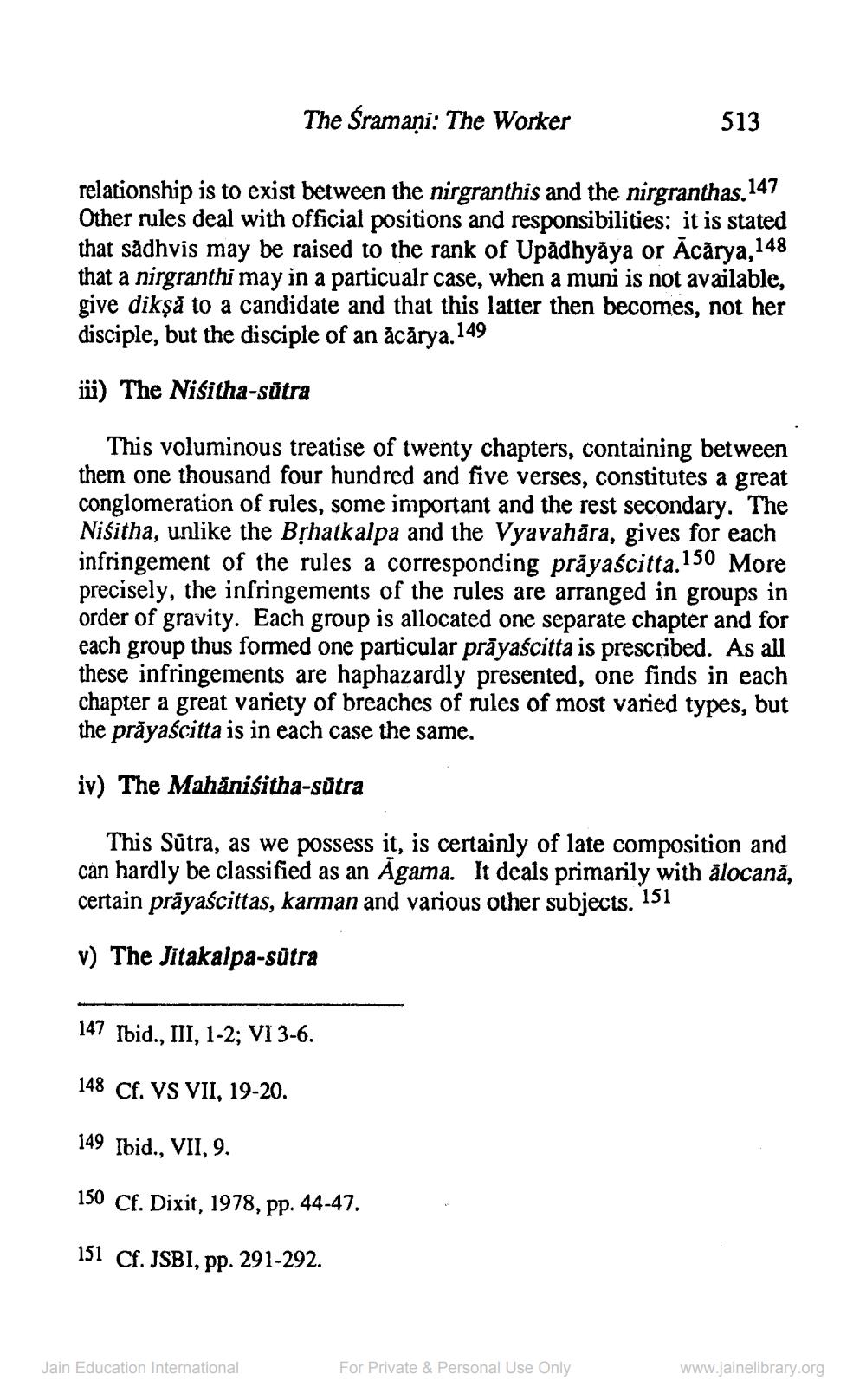________________
The Sramani: The Worker
513
relationship is to exist between the nirgranthis and the nirgranthas.147 Other rules deal with official positions and responsibilities: it is stated that sădhvis may be raised to the rank of Upadhyāya or Ācārya,148 that a nirgranthi may in a particualr case, when a muni is not available, give dikşă to a candidate and that this latter then becomes, not her disciple, but the disciple of an acārya. 149
iii) The Nisitha-sūtra
This voluminous treatise of twenty chapters, containing between them one thousand four hundred and five verses, constitutes a great conglomeration of rules, some important and the rest secondary. The Niśitha, unlike the BỊhatkalpa and the Vyavahāra, gives for each infringement of the rules a corresponding prāyaścitta. 150 More precisely, the infringements of the rules are arranged in groups in order of gravity. Each group is allocated one separate chapter and for each group thus formed one particular prāyaścitta is prescribed. As all these infringements are haphazardly presented, one finds in each chapter a great variety of breaches of rules of most varied types, but the prāyaścitta is in each case the same.
iv) The Mahānisitha-sūtra
This Sūtra, as we possess it, is certainly of late composition and can hardly be classified as an Agama. It deals primarily with alocană, certain prāyaścittas, karman and various other subjects. 151
v) The Jitakalpa-sútra
147 Ibid., III, 1-2; VI 3-6.
148 Cf. VS VII, 19-20.
149 Ibid., VII, 9.
150 Cf. Dixit, 1978, pp. 44-47.
151 Cf. JSBI, pp. 291-292.
Jain Education International
For Private & Personal Use Only
www.jainelibrary.org




